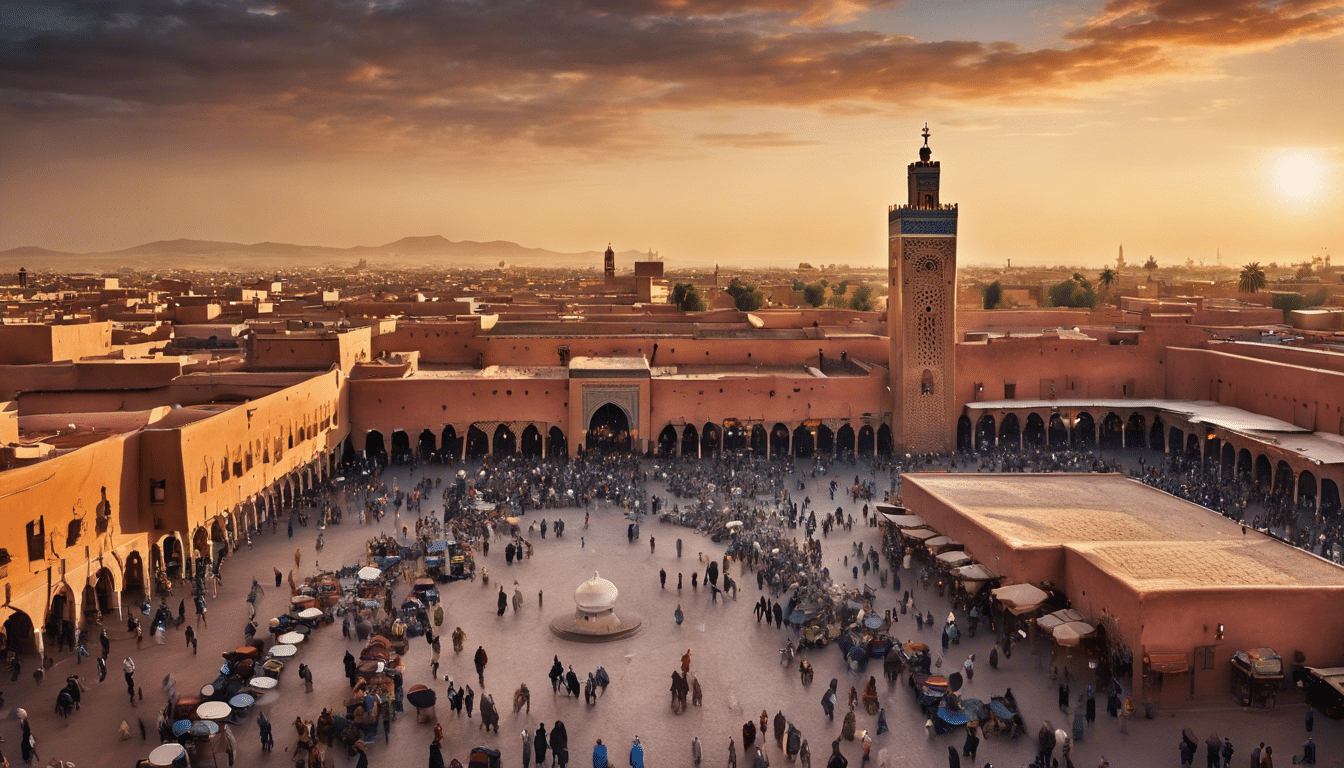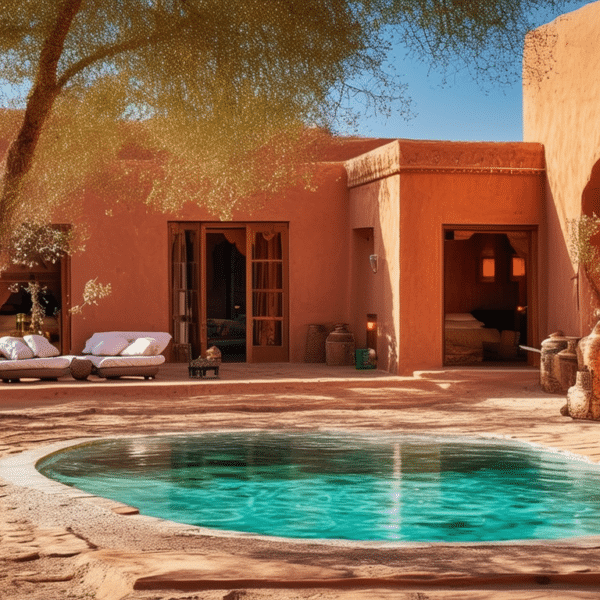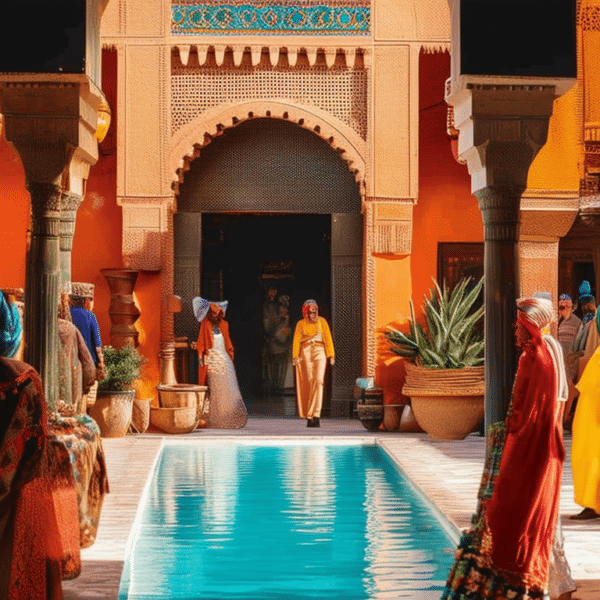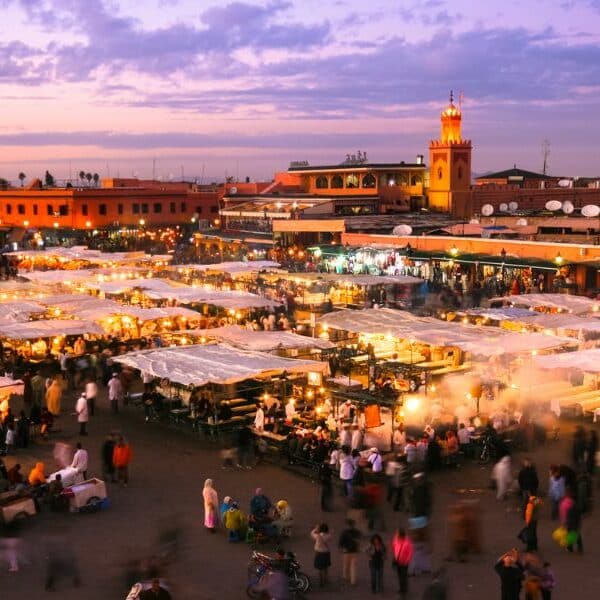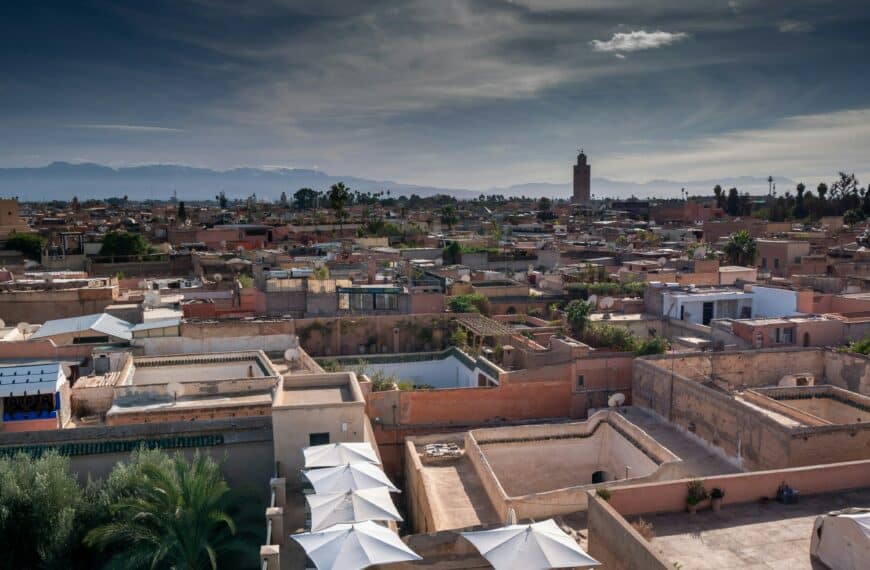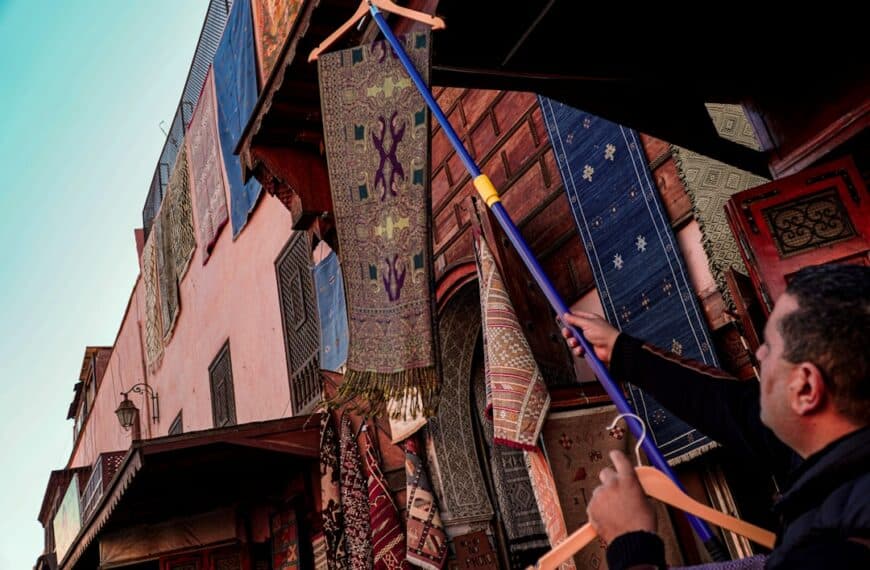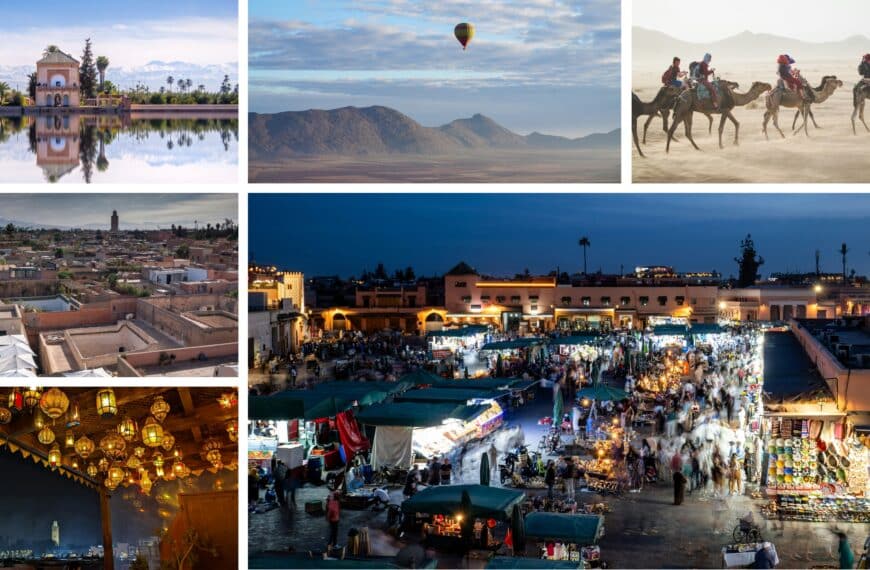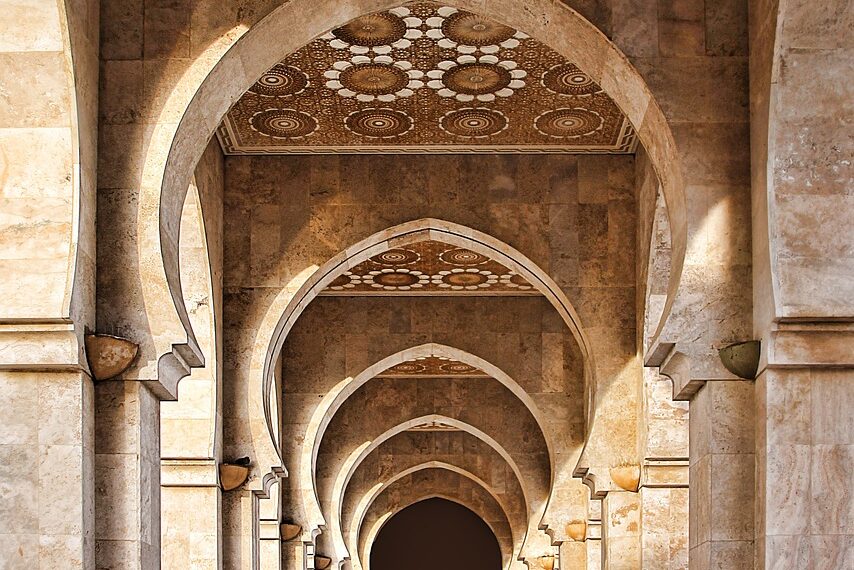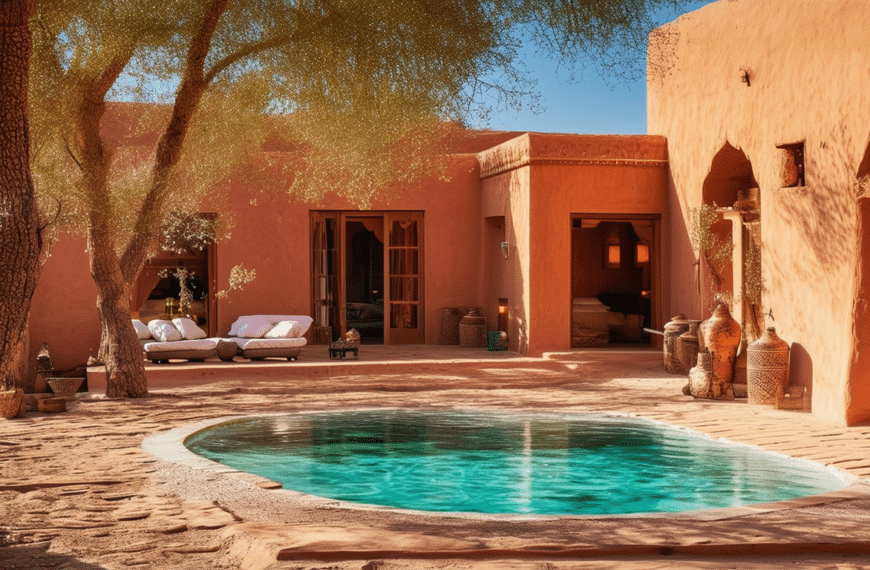Greetings, curious wanderers and Marrakech adventurers! Are you ready to journey through time in the enchanting city famed for its vibrant colors and profound history? Unveil the mysteries of Marrakech’s storied past as we reveal the must-visit historical landmarks that stand as silent narrators of an illustrious heritage. From the majestic Koutoubia Mosque to the serene Saadian Tombs, we’re about to embark on an exploration of spellbinding sites that echo tales of sultans, scholars, and centuries-old culture. Pack your zest for travel and an insatiable appetite for discovery, for Marrakech awaits to unveil its treasures through its most cherished historical sites! 🕌✨
Exploring the Red City: Must-Visit Historical Sites in Marrakech
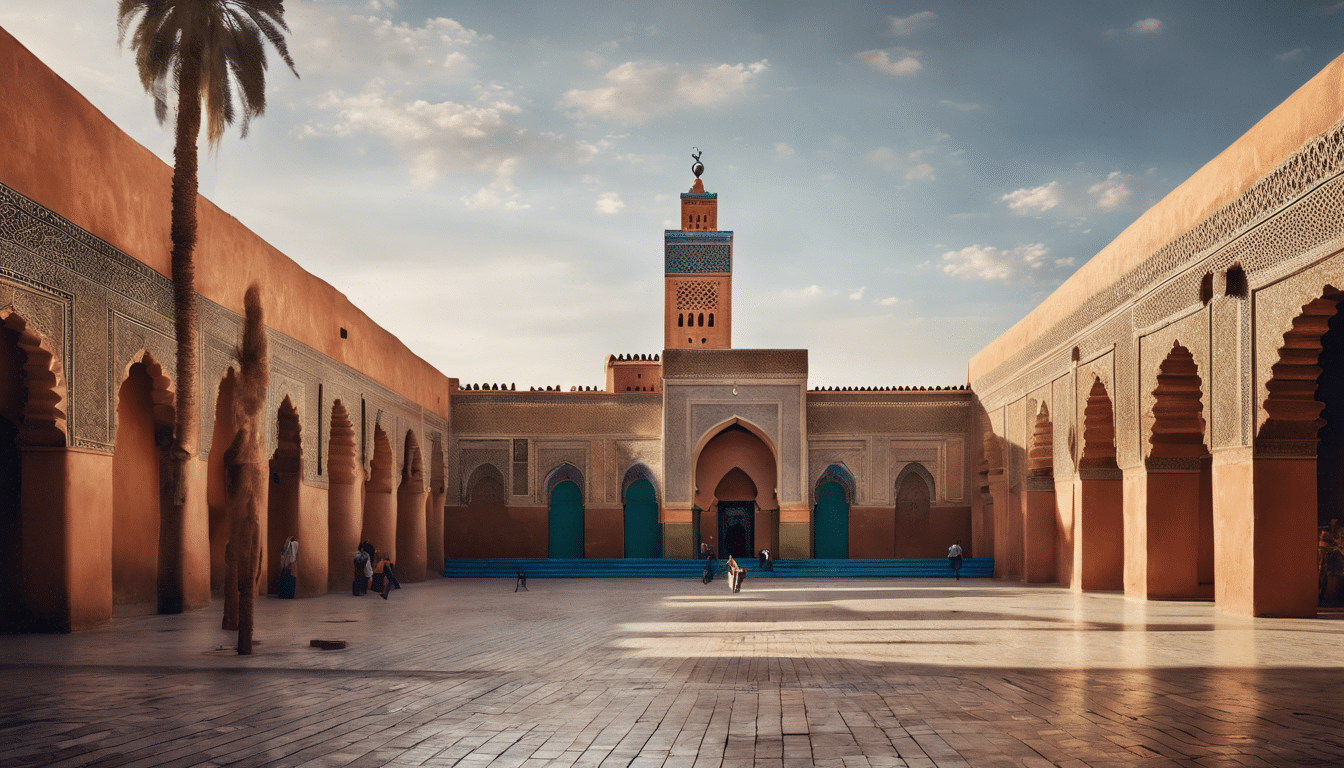
Historical Sites: Exploring the Red City: Must-Visit Historical Sites in Marrakech
Marrakech stands as a resplendent jewel in Morocco’s crown. Given its acclaim as one of the top destinations for international tourists, the city beckons to those with a penchant for history and culture. This is where the ancient converges with the cosmopolitan, offering visitors an enchanting journey through time. To truly embrace Marrakech’s spirit, exploring its historical sites is a must.
Behold the Beauty of Bahia Palace
Your journey into Marrakech’s history starts with the exquisite Bahia Palace. A masterpiece of Moroccan architecture, this 19th-century palace offers a glimpse into the opulent life of the city’s former royals. Stroll through rooms rich with intricate carvings, explore serene courtyards, and admire the stunning tilework that adorns the palatial walls.
The Koutoubia Mosque’s Majestic Stance
The Koutoubia Mosque’s minaret pierces the sky, acting as both a spiritual beacon and an architectural wonder. Although non-Muslim visitors are not allowed inside the prayer hall, the surrounding gardens offer a peaceful retreat, and the mosque’s imposing structure is a sight to behold. Its design has inspired other famous buildings, such as Spain’s Giralda Tower.
Saadian Tombs: Royal Resting Ground
Tucked away behind a nondescript wall, the Saadian Tombs were rediscovered in the early 20th century. This royal necropolis houses the remains of Saadian rulers, with the most lavish mausoleum dedicated to Sultan Ahmad al-Mansour. The tombs are decorated with vibrant zellij tiles, intricate marble, and carefully carved cedar wood, showcasing the grandeur of Saadian architecture.
El Badi Palace: Aged Elegance
El Badi Palace, once the epitome of luxury, now stands in ruins, a reminder of bygone prosperity. Originally embellished with gold and onyx, visitors can still sense its past splendor as they wander through the remains of the vast complex. In May, as the sun dances across the sky, the palace’s ruinous charm is particularly evocative.
Experience the Energy of Djemaa el-Fna
Djemaa el-Fna is more than a square; it’s an atmospheric convergence of Marrakech’s past and present. As day turns to night, the space transforms into a bustling hub of street performers, musicians, and storytelling, offering a contemporary look at Moroccan cultural expressions rooted in history.
Menara Gardens: A Serene Oasis
Away from the Medina’s frenzy, the Menara Gardens provide a tranquil escape. These 12th-century gardens are perfectly tailored for leisurely strolls, with the Atlas Mountains providing a stunning backdrop. The pavilion and reflective pool are central features, symbolizing the architectural precision of ancient Moroccan landscape designs.
Dig Deeper at the Marrakech Museum
To fully immerse yourself in the Red City’s historical narrative, the Marrakech Museum is an essential stop. Housed in a former palace, it boasts an impressive collection of Moroccan art and artifacts that tell the story of Marrakech’s evolution across the centuries. Each exhibit echoes the city’s status as one of the best cities to visit in Morocco.
Discover Ben Youssef Madrasa
Ben Youssef Madrasa, once an Islamic college, is now cherished for its stunning architecture. Step into its central courtyard, and you’ll be surrounded by the exquisite craftsmanship that has stood the test of time, including ornate carvings and mosaics that excite the senses.
A Medley of Museums and Heritage Sites
To enhance your historical exploration, Marrakech is lined with smaller museums and heritage sites. Venture into the Museum of Moroccan Arts or the Dar Si Said Museum to get up close with local craftsmanship. Marrakech’s historical fabric is beautifully preserved across these sites, offering a deeper understanding of its cultural diversity and artistic prowess as highlighted by Al Jazeera’s travel show ‘Al Moussafir’.
In Marrakech, the past coalesces with the present, crafting a cityscape that is as dynamic as it is reverent of its historical roots. Whether you’re on your honeymoon or a solo adventure, the historical sites of Marrakech offer a timeless allure and a profound sense of connection to the generations that have walked the city’s storied paths. Embrace the city’s warm embrace and let the echoes of history guide you through the enchanting Red City.
Delving into the Past: The Medina of Marrakech
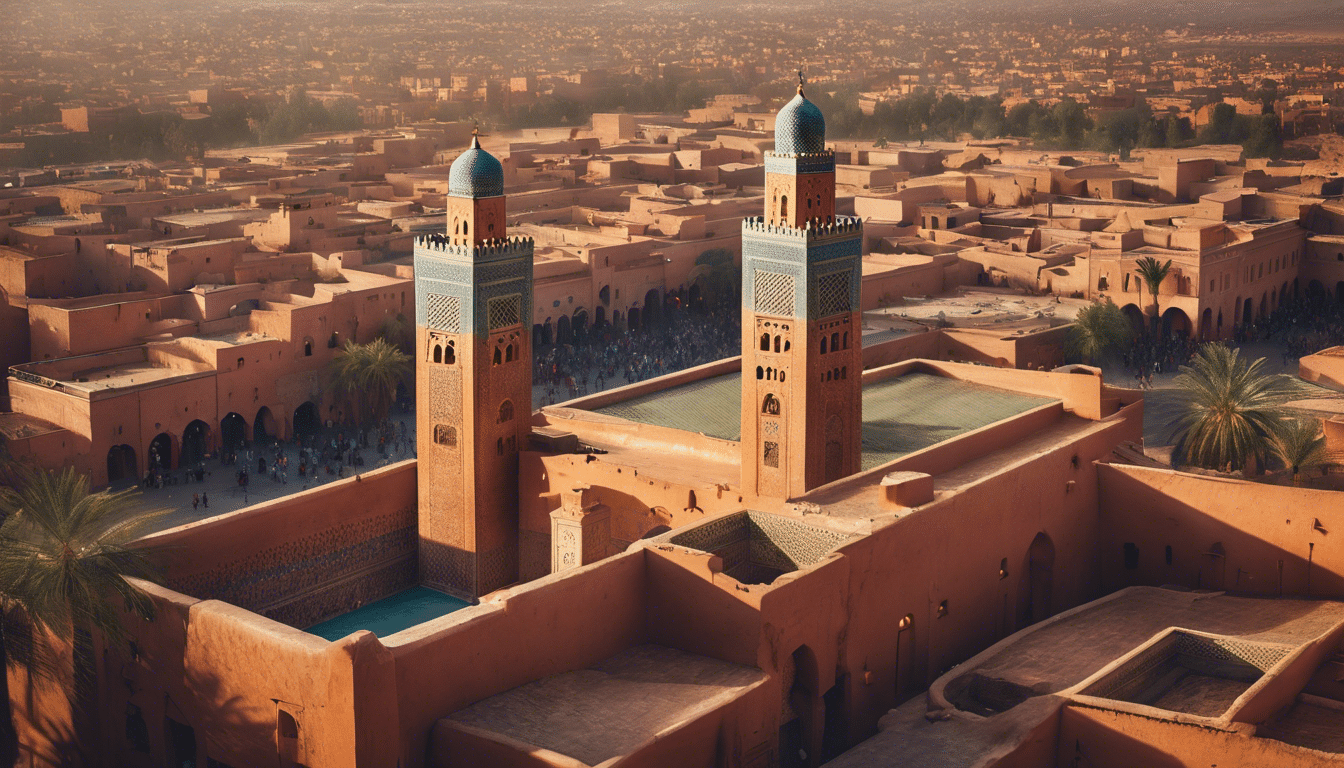
Historical Sites: Delving into the Past: The Medina of Marrakech
Marrakech, a city of timeless wonder, stands as one of the most enticing destinations for those seeking to immerse themselves in history. Its heart beats in the Medina of Marrakech, a labyrinth of narrow streets and alleys that echo with the stories of the past. The Medina is not just a place—it’s an experience, winding inwards like the serpentine paths that define it.
Unraveling the Secrets of the Medina
Visitors often compare the exploration of Marrakech’s Medina to a treasure hunt. With each turn, there’s a chance of stumbling upon hidden courtyards, vibrant souks, or intricately designed monuments. It’s a place where adventurers and curiosity seekers come to life, although caution is advised. As the recent headline ‘Treasure Hunters Suffocate in Marrakech’s Historic Medina Tunnel’ suggests, the ancient pathways can be as hazardous as they are enchanting.
Living History in Every View
Marrakech’s Medina does more than evoke the past; it serves as a living museum where every glance offers a Unesco World Heritage view. This is echoed by the global recognition of hotels in heritage sites, illustrating how one can reside amidst history, as noted in the survey ‘Ten hotels that come with Unesco World Heritage views, from Saudi Arabia to Japan.’ The Medina offers a comparable experience, with traditional riads providing an authentic and serene vantage point over a city steeped in history.
The Perfect Time to Explore
Timing your visit can greatly impact the experience. Nestling between the heat of summer and the cool of winter, October is highlighted as one of ‘The 10 best places to visit in October’ given Marrakech’s pleasant climate and the Medina’s colorful character. As autumn’s mildness graces the city, a sojourn through its historic core becomes all the more delightful.
A Whirlwind Tour: 48 Hours in Marrakech
Even a brief visit can be fulfilling with proper guidance. A ’48-Hour Travel Guide to Marrakech’ can help identify the Medina’s key locations, ensuring that you miss neither the essential sites nor the lesser-known treasures. From the bustling Jemaa el-Fnaa to the tranquil gardens of the Bahia Palace, the Medina serves as a capsule that transports its visitors across time.
Connecting Flights to History
Access to Marrakech has never been easier, with ‘Bristol airport destinations’ offering routes that suit every traveler’s preferences. These connections have brought the city and its historic Medina closer to culture enthusiasts worldwide. Upon arrival, the convenient transport options within Marrakech make each historic site readily accessible.
In exploring the Medina of Marrakech, one embarks on a journey through the layers of time, piecing together narratives from a rich tapestry of history. The meandering paths not only lead to stunning architecture but also to encounters with living traditions and the enduring spirit of Morocco. Whether you’re here to unravel the past or to create new memories, the Medina is your gateway to a profound cultural odyssey.
The Heart of Marrakech: Koutoubia Mosque’s Rich History
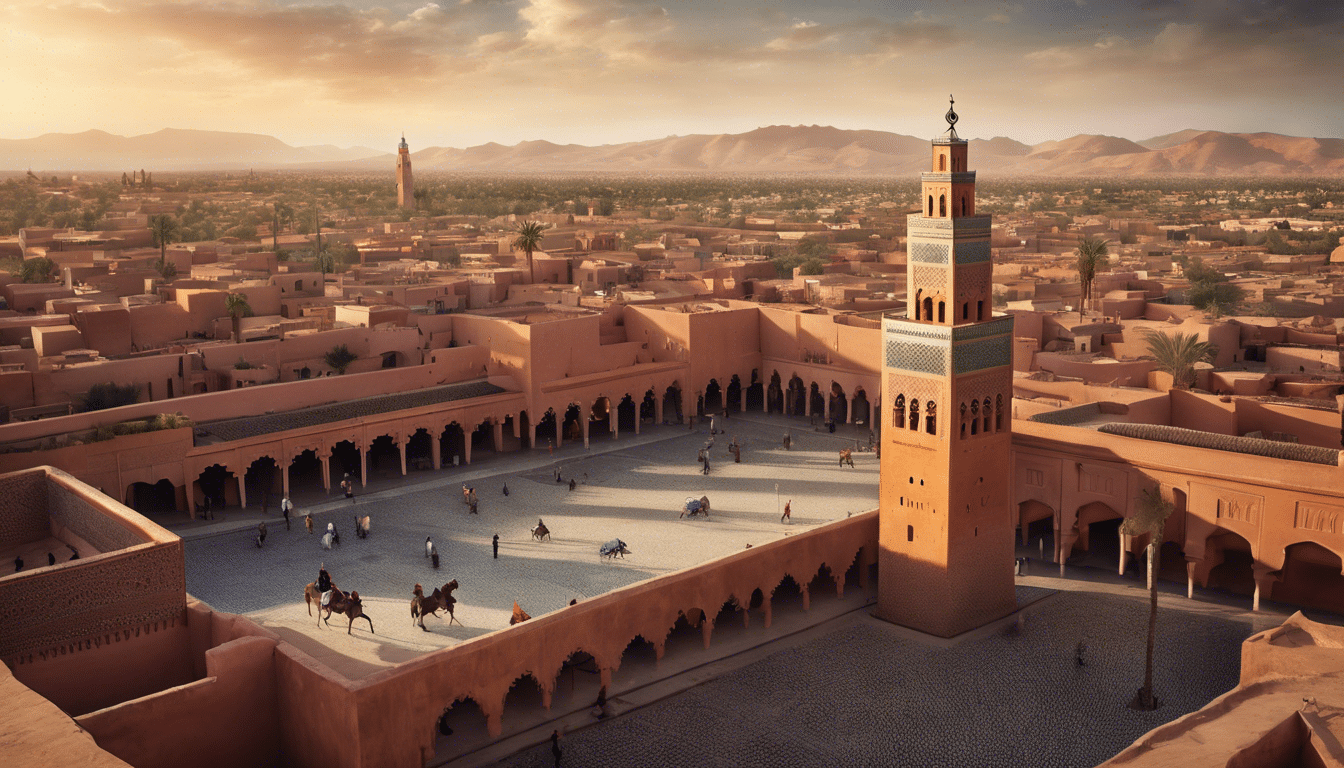
The Historical Significance of Koutoubia Mosque in Marrakech
As one journeys through the vibrant city of Marrakech, the Koutoubia Mosque stands as a testament to the enduring history of Morocco. Rooted in the spiritual and cultural bedrock of the city, this mosque is not only a pinnacle of architecture but also an emblem of the resilience of a nation that has withstood natural calamities, including the recent tremors that shook the very ground it stands upon.
Understanding Koutoubia’s Roots and Architecture
Completed in the 12th century under the Berber Almohad Caliphate, the Koutoubia Mosque is a marvel of Almohad architecture. Adorned with intricate tile work and arabesques, the mosque is crowned by a striking minaret that has inspired subsequent structures around the world, including the Giralda in Spain. The name ‘Koutoubia’ is derived from the Arabic term for booksellers, a nod to the vibrant marketplace of manuscripts that once thrived in its shadow.
The Mosque’s Role Within Marrakech’s History
Throughout the centuries, the Koutoubia Mosque has witnessed the ebbs and flows of Marrakech’s history. From the days when merchants traversed the Sahara to bring their wares to the city’s souks, to the recent solidarity shown by the nation after a devastating earthquake, the mosque has remained a steadfast symbol of unity and faith. Not only is it a place of worship, but it also reflects the city’s ability to remain standing amidst adversities.
Visiting Koutoubia: What Travelers Need to Know
For dedicated travelers who seek the depth of cultural immersion, a visit to Koutoubia is essential. Its minaret towers over the city, serving as a navigational marker to those wandering the medina’s alleys. While non-Muslims may not enter the prayer hall, all can appreciate the grandeur of its external structure and the serene gardens that envelop it. Visitors should seek out the best viewing spots, such as the rooftop terraces of Marrakech’s traditional riads.
Navigating the Aftermath of the Earthquake
The recent earthquake that struck Morocco brought untold damage to its cultural sites, yet the Koutoubia Mosque withstood the tremors, asserting its strength both literally and symbolically. As the city recovers, it’s important for travelers to stay updated via trusted sources such as “The Ultimate Marrakech Travel Guide” or “Travel Noire,” ensuring they respect the ongoing restoration efforts while exploring this historic jewel.
Preserving Koutoubia’s Legacy for Future Generations
Ensuring that such historical treasures persist through the ages requires both local and global efforts. Beyond admiring its stunning façade, visitors should support responsible tourism that promotes the conservation of Marrakech’s landmarks. Sharing stories, contributing to preservation funds, and engaging with local heritage conservators are all vital acts in protecting the integrity of places like the Koutoubia Mosque.
The Koutoubia Mosque’s rich history is not only a beacon for Morocco but for all who appreciate the intricate tapestry of human civilization. As Marrakech continues to thrive, the mosque remains a steadfast reminder of the city’s resilience, beauty, and historical depth waiting to be explored by curious and respectful travelers.

